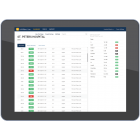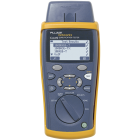Verification Qualification and Certification
When you finish a cable installation the customer expects it to work. So do you. That’s why you tested it before delivering it to the customer.
The way you test the installation has a bearing on what kind of warranty you can offer your customer. This article examines three types of test tools, all of which are useful at the right stage of the installation process. But the bottom line is this; if you want to offer a warranty backed by the cable manufacturer, you need to use a certification tool approved by the manufacturer. Anything else puts the sole warranty responsibility upon you.
The three kinds of test tools
Handheld test instruments (better known as test tools) are designed with a variety of focused feature sets for particular fieldwork tasks. They vary tremendously in price, performance, and application. Depending on what task the test tool performs, they can be classified into one of three broad hierarchical groups – verification, qualification, or certification. While some features overlap between test tools as you move up the hierarchical ladder from verification to certification, each group answers a unique question:
Is this cable connected correctly?
Verification tools are often used by network technicians and contractors as a first line of defense for cable troubleshooting. Verification test tools allow you to see if the cable is properly connected.
Can this cable support my desired network technology?
Qualification tools are more sophisticated tools that network technicians use to troubleshoot and qualify cabling bandwidth. Qualification test tools give you the information you need to decide if existing cabling will support your technology requirements like 100BASE-TX, VoIP, Gigabit Ethernet, etc.
Does this cable comply with cabling standards?
Certification test tools answer the question, “Does this cable comply with cabling standards? (e.g. TIA-568-B.1 Category 6 or ISO 11801 2nd Edition Class E)”. These tools are used by commercial datacom installers/contractors and enterprise facility managers, and are required by cabling manufacturers, to ensure new cabling fully meets requirements of cabling standards and the cabling manufacturer’s warranty.
A Closer Look at Verification
Verification test tools perform basic continuity functions (for example., wiremap, toning). These verification test tools sometimes include additional features such as a Time Domain Reflectometer (TDR) for determining length to the end of a cable or to a trouble spot. They may also detect if a switch is connected to the cable under test or check coaxial connections.
Verification tools are simple-to-use low cost tools that are often the first line of defense in finding cabling problems. On the fiber side, a simple Visual Fault Locator (VFL) could be considered a verification tool as it verifies contiguous fiber connections and fiber polarity.

Figure 1 Verification tools are simple, low-cost devices that check the basic connectivity of the installed links.
A Closer Look at Qualification
Qualification test tools include the functions of verification tools, but go further in their capability. Designed specifically for a network technician, the key function of a qualification test tool is its capability to determine whether the cable under test can transmit or support the signaling of specific network technology. Qualification tools test the cabling to determine whether or not certain network technologies (e.g., 100BASE-TX, VOIP, Gigabit Ethernet) will perform on the cabling system.
For example, lets assume you have two cables of unknown capability. Both cable A and cable B pass the verification wiremap test. However, a qualification test may show that cable A is only capable of supporting 10BASE-T, while cable B is able to support Gigabit Ethernet.
A unique feature of these test tools is the ability to diagnose common cabling problems that may limit the cabling bandwidth a function that goes well beyond the basic continuity tests of verification tools.
Qualification tools are much more powerful than verification tools, and are designed to give even the most novice technician vision to see what speeds existing cabling can support and quickly isolate cabling from network problems. This means network techs can close trouble tickets faster and reduce on-call time. However, qualification tools do not perform certification required by cable manufacturers.
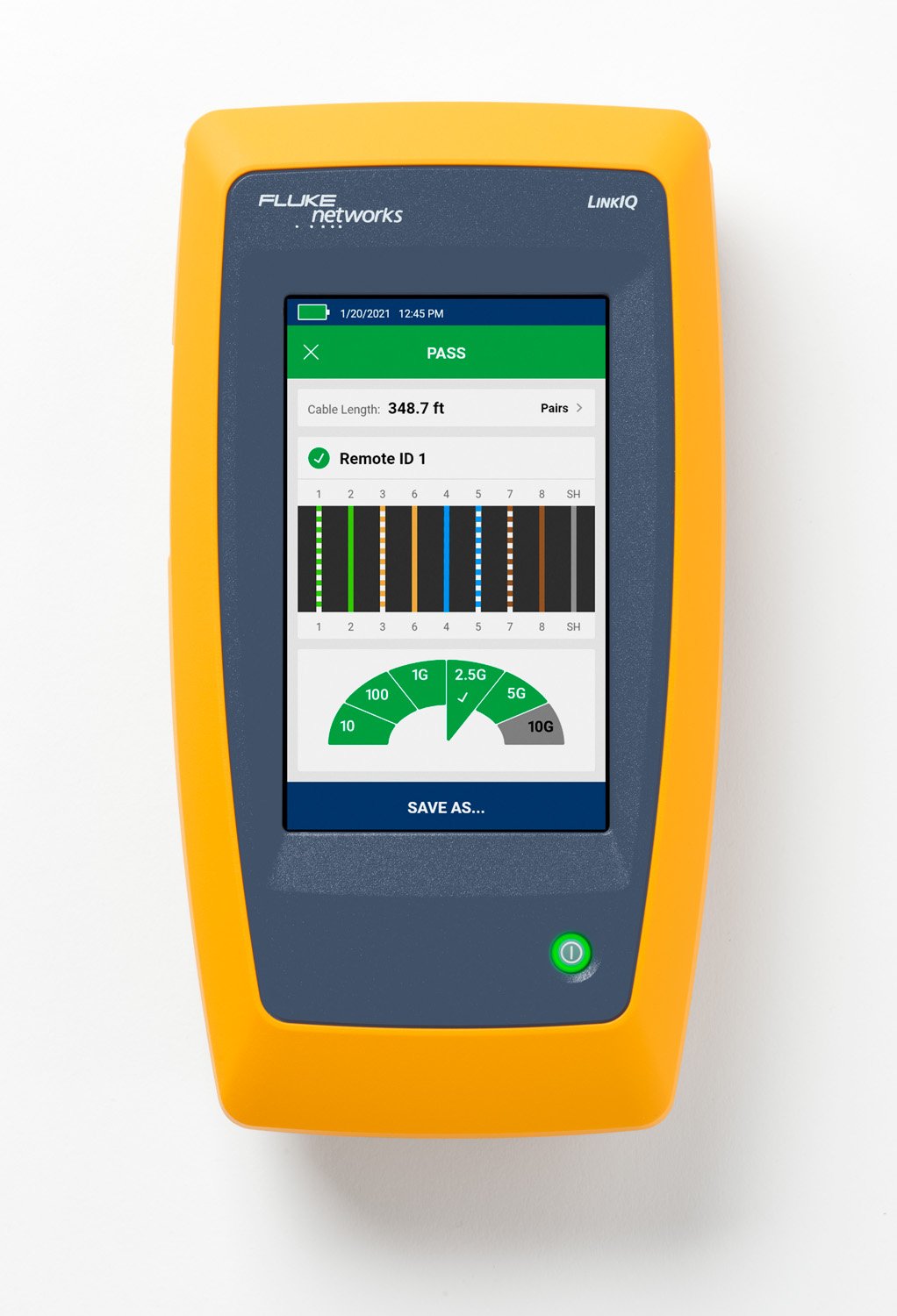
Figure 2 Qualification tools will tell you what services can be successfully deployed on a given link. This example shows a link suitable for 10BASE-T, 100BASE-TX, 1G, 2.5G, and 5G, but unacceptable for 10G.
A Closer Look at Certification
Certification is the most rigorous of all cable testing. Performed primarily by commercial datacom installers, this is the final step required by connectivity OEMs to grant their warranties for properly installed cabling projects. A certification test tool makes many types of measurements across predefined frequency ranges and compares the detailed results to standards set by the Telecommunications Industry Association (TIA) {ANSI/TIA/EIA-568-B.1} or International Standards Organization (ISO) (ISO/IEC 11801 Ed.2). The results from these measurements determine if a link is compliant with a category or Class of cable (for example, category 5e, category 6, Class D). Certification tools are the only tools that provide Pass or Fail information on the cabling, in accordance with TIA or ISO standards.
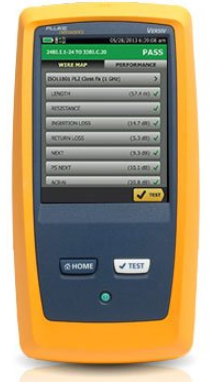
Figure 3 Certification tools take very precise measurements on parameters spelled out in TIA and ISO standards. Documented results from a high-accuracy certification tool is the only means of meeting the requirements of manufacturers warranties.
While verification and qualification tools typically test the channel configuration, certification tools are able to also test the permanent link, which is commonly installed by commercial datacom contractors. Additionally, certification test tools commonly support optical fiber test options, provide advanced graphical diagnostics and offer feature rich reporting capabilities.
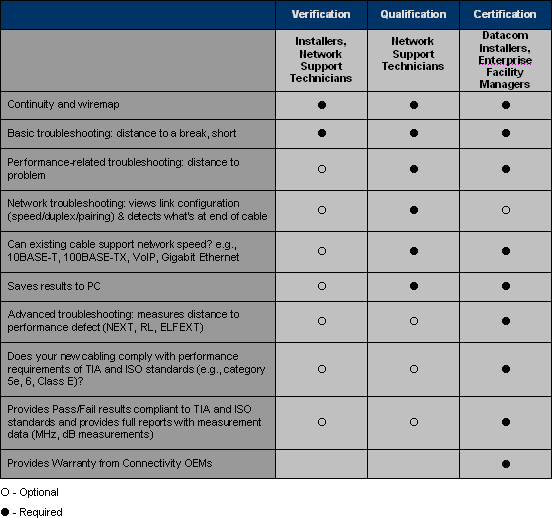
Table 1 A Comparison of Verification, Qualification, and Certification Test Tool Functions
Financial implications of choosing the right tool for the job
As explained above, each test tool is designed for a different purpose. If you are a network technician, and have undocumented cabling and need to see if it will support your 100BASE-TX network, a qualification tool is the tool for you.
If you have an existing network and are doing small adds, moves, and changes, or are setting up a temporary network and just need to qualify it for a specific network technology, a qualification tool could be the way to go. If you want to equip a larger number of technicians with a powerful tool for troubleshooting the most common cabling and network problems, then the value of qualification tools is hard to beat.
On the other hand, if you are in a troubleshooting environment, and need to show unequivocally that the link under test is failing category 5e or 6 performance requirements according to TIA or ISO standards, your only choice is a certification tool. If you have a mixture of fiber and copper cabling, and often need to test both, certification tools do that best.
If you are a commercial installer who needs to prove to the building owner that all cabling has been installed correctly, you must certify it. To receive the support and financial security of a manufacturers warranty, certification to TIA or ISO standards is your only option.
The dollars at risk are huge. The final cost-per-link of commercial installation usually averages about $100. For a large 1,000 link installation, this represents a $100,000 project. If the job is a high-bandwidth, category 6 installation, the higher quality cables and terminations typically command a 20% premium.
So an installer has to weigh the options of who should bear the financial risk. Using a certification tool that meets TIA and ISO standards is a requirement for establishing a warranty recognized by the cable manufacturer. Anything else makes the installer liable for the performance of that $120,000 installation. A prudent installer will want the manufacturer standing behind him.

